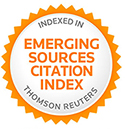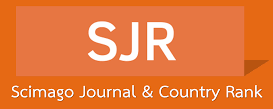Viaje al centro de la Tierra: la geopolítica del heartland
Resumen
Este artículo apunta a destacar las principales características históricas y geopolíticas de Asia Central, una región sobre la cual algunos autores como Brzezinski, afirman que quien controle ese espacio, gobernará el planeta, vinculando por otro lado, la durabilidad de la hegemonía estadounidense a la política de Washington en la región. ¿Por qué Asia central es importante en el sistema internacional? El argumento central es que ésta es una región de gran importancia en el escenario económico actual, como resultado de su historia, su geografía y su posición estratégica como nexo entre Oriente y Occidente; un espacio de competencia y de fortalecimiento para las grandes potencias.
Palabras clave
Texto completo:
PDFReferencias
AGÊNCIA INTERNACIONAL DE ENERGIA. 2011. Disponível em:
.
[Acesso em: 18 mar. 2012].
AKBAR, Z. 2012. Central Asia: The New Great Game. The Washington Review of
Turkish & Eurasian Affairs, October,Disponível em:
org/articles/central-asia-thenew-great-game.html>. [Acesso em: 23 mar. 2012].
ANDERSON, J. 1997. Islam, ethnicity and regional conflict: the case of Tajikistan.
The International Politics of Central Asia. Manchester University Press. Manchester.
p.
ANTUNES, F. 2012. Entrevista Pessoal. Lisboa-Portugal.
ASIMOV, S., 2001, Disponível em: Description of the Project, in UNESCO History of
Civilizations of Central Asia,
. [Acesso em: 23 mar. 2012].
ASIMOV, S. & E. BOSWORTH. 1998. History of civilizations of Central Asia. Vol. IV.
UNESCO Publishing. 474 p.
AZARCH, L. 2009. Central Asia and the European Union: Prospects of an Energy Partnership.
The China and Eurasia Forum Quarterly. 7(4): 55-72.
BABAK, V. 2006. The Oil and Gas Sector in Kazakhstan.Central Asia and the Caucasus,
(4): 41-54.
BACON, E. 1966. Central Asians under Russian Rule: A Study in Culture Change.
Cornell University Press. Ithaca. 273 p.
BENNIGSEN, A. & M. BROXUP. 1983. The Islamic Threat to the Soviet State. Croom
Helm. London-UK. 190 p.
BP. 2011. Energy Outlook 2030, 60 years Statistical Review. Disponível em: http://
www.bp.com/content/dam/bpcountry/en_ru/documents/publications_PDF_eng/
Energy_outlook_2030_eng_2011.pdf
BRADBURY, D. 2011. Entrevista Pessoal. Almaty-Cazaquistão.
CARAVELLI, J. 2011. Entrevista Pessoal porvia telefónica. Estados Unidos.
CARRERE d’ENCAUSSE, H. 1978. Determinants and Parameters of Soviet Nationality
Policy. En: J. Azrael (ed.). Soviet Nationality Policies and Practices. Praeger
Publishers. New York-USA.
COLLINS, K. 2006. Clan Politics and Regime Transition in Central Asia. University
Press. Cambridge. 286 p.
CUTLER, R. 2011. Kazakhstan’s offshore Kashagan deposit set for first oil in
Central Asia – Caucasus Institute.Disponível em:
org/?q=node/5564>. [Acesso em: 20 mar.2012].
DANI, A. & V. MASSON. 1992. UNESCO History of Civilizations of Central Asia.
UNESCO. Paris-France. 535 p.
DICKENS, M. 1989. The Impact of Russo-Soviet Culture in Central Asia. Disponível em:
. [Acesso em: 20 mar.2012].
ENCYCLOPAEDIA BRITANNICA, 2013, Disponível em:
.
[Acessoem: 23 mar. 2012].
ENERGY INFORMATION ADMINISTRATION. 2012. Country Analysis Briefs-
Turkmenistan. Disponível em:
.
[Acesso em: 22 mar. 2012].
ESENGUL, C. 2009. The Politics of Regionalism in Central Asia, Ministry of Education
and Science of the Kyrgyz Republic.Bishkek. 221 p.
ESENGUL, C. 2012. Entrevista Pessoal.Bishkek-Quirguistão.
FOURNIAU, V. 2006, Disponível em:
maitre-de-conferences-a-l-ehess/>.[Acesso em: 19 mar. 2012].
GLEASON, G. 1997. The Central Asian states: discovering independence. Westview
Press. Boulder. 302 p.
GLOBAL BUSINESS REPORTS-CASPIAN REGION. 2012. Disponível em:
Caspian_O&G2012.pdf>. Acesso em: 23mar. 2012
GUEDES, A. 2011. Entrevista Pessoal. Lisboa-Portugal.
HEKIMOGLU, L. 2005. Whither Heartland? Central Asia, Geography and Globalization.
Central Asia and the Caucasus. 34(4): 61-80.
ISMAILOV, E. & V. PAPAVA. 2010. Rethinking Central Eurasia, Central Asia-Caucasus
Institute & Silk Road Studies. Washington DC-USA. 117 p.
KENISARIN, M. 2004. The Energy Sector of Uzbekistan: Present State and Problems.
Central Asia and the Caucasus, 26 (2):124-137.
KOICHIEV, A. 2003. Ethno-territorial claims in the Ferghana Valley during the process
of national delimitation, 1924-1927. En: T.Everett-Health (ed.), Central Asia: aspects
of transition. Routledge Kurzon.London-UK.
KRAMBS, T. 2013. Central Asia and the Afghanistan Security Dilemma: Amelioration, Retrograde,
or Status Quo? Central Asia’s Role in Regional Security Regarding Afghanistan
after 2014. CONNECTIONS The Quarterly Journal, XII (2): 1-26.
LEE, H. 2012. Russian/Soviet Central Asia in Political Transition, 1800-1945.
Term Paper, AP World History Class, December.
LEWIS, M. & K. WIGEN. 1997. The Myth of Continents: A Critique of Metageography.
University of California Press. Berkeley.133 p.
LINN, J. 2004. Economic (Dis)Integration Matters: The Soviet Collapse Revisited.
The Brookings Institution. Washington- USA. 264 p.
LINN, J. 2007. Central Asia-National Interests and Regional Prospects. China and Eurasia
Forum Quarterly. 5 (3): 5-12.
LOWE, R. 2003. Nation building and identity in the Kyrgyz Republic. En: T. Everett-Heath
(ed.). Central Asia. Aspects of Transition.Routledge Curzon. London and New
York-USA.
MAKHMATOVA, M. 2011. Entrevista Pessoal.Almaty-Cazaquistão.
MALIK, H. 1994. Central Asia: Its strategic importance and future prospects. St.
Martin’s Press. New York-USA. 337 p.
MARAT, E. 2006. The State-Crime Nexus in Central Asia: State Weakness, Organized Crime,
and Corruption in Kyrgyzstan and Tajikis tan, Silk Road Paper, Washington: Central
Asia-Caucasus Institute, Disponível em:
.
[Acesso em: 17 mar. 2012].
MENON, J. 2007. Bilateral Trade Agreements. Asian-Pacific Economic Literature.
(2): 29-47.
OLCOTT, M. 2002. Kazakhstan: A Fainthearted Democracy. Carnegie Endowment
for International Peace. Washington DC-USA. 245 p.
ORGANIZACIÓN PARA LA COOPERACIÓN Y EL DESARROLLO ECONÓMICO (OCDE).
Central Asia Competitiveness Outlook.Disponível em:
www.oecd.org/daf/psd/eurasia
PIPES, D. 1983. The Third World Peoplesm of Soviet Central Asia, Disponível em:
.
[Acesso em: 21 mar. 2012].
ROY, O. 2000. The new Central Asia. The creation of nations. New York University
Press. New York-USA. 222 p.
RYWKIN, M. 1963. Russia in Central Asia. Collier. New York-USA. 191 p.
SHISHKIN, P. 2012. Central Asia’s Crisis of Governance. Asia Society. London-UK.
p.
SILVER, B. 1974. Social Mobilization and the Russification of Soviet Nationalities. The
American Political Science Review. 68 (1): 45-66.
SOCOR, V. 2012. The JamesTown Foundation. July 19. Disponível em:
jamestown.org/single/?no_cache=1&tx_ttnews%5Btt_news%5D=39649>.
[Acesso em: 20 mar. 2012].
STEINBERGER, P. 2003. Fundamentalism in Central Asia. En: T. Everett-Health (ed.),
Central Asia: aspects of transition.Routledge Kurzon. London-UK.
THE ASTANA TIMES. 2011 January 11. Disponível em:
.
[Acesso em: 23 mar. 2012].
THROWER, J. 1987. The Survival of Islam in the Soviet Union: The Forgotten Muslims
of Central Asia and Kazakhstan. The Scottish Journal of Religious Studies. 8
(2): 108-120.
TOLIPOV, F. 2007. Central Asia: Universal Democracy, National Democracy, or Enlightened
Authoritarianism? Central Asia and the Caucasus. 44 (2): 7-17.
U.S. CONGRESSIONAL RECORD. 1998. 105th Congress (1997-1998). The Library of Congress.
WARKOTSCH, A. 2008. Normative Suasion and Political Change, Central Asia,
Caucasian Review on International Affairs. 2 (4), Disponível em:
org/Journal/5/NORMATIVE%20 SUASION.pdf>. [Acesso em: 23 mar. 2012].
WEISS, A.; LARRABEE, S.; BARTIS, J. & C. SAWAK. 2012. Promoting International
Energy Security. RAND Corporation.Santa Monica. 156 p.
XUETANG, G. 2006. The Energy Security in Central Eurasia: the Geopolitical Implications
to China’s Energy Strategy. China and Eurasia Forum Quarterly. 4
(4):117-137
Enlaces refback
- No hay ningún enlace refback.
DOI: https://doi.org/10.53766/RGV
La Revista Geográfica Venezolana se encuentra actualmente indizada en:
 |  |  | |
 |  |  |  |
 |  |  |  |
![]()
Todos los documentos publicados en esta revista se distribuyen bajo una
Licencia Creative Commons Atribución -No Comercial- Compartir Igual 4.0 Internacional.
Por lo que el envío, procesamiento y publicación de artículos en la revista es totalmente gratuito.
